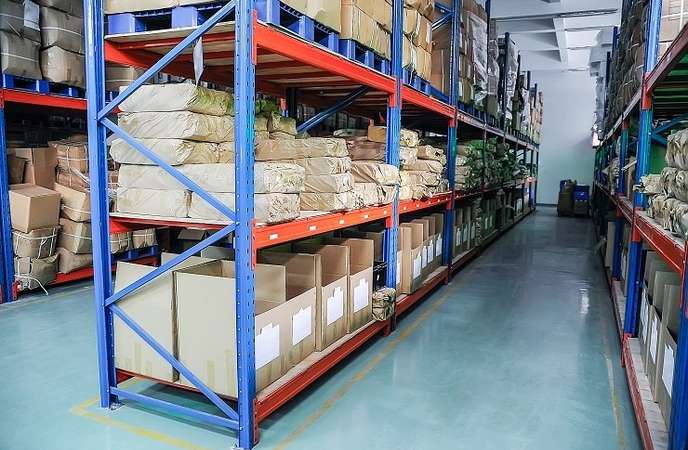The global standards for industrial storage are increasing gradually and to meet the expectations, many warehouses have adopted lean warehouse management. Lean manufacturing is a method that Toyota introduced for the automotive industry; it aims at eliminating any process or activity that uses resources but does not add value to the product. It is the process to minimise wastage without degrading productivity. A straightforward framework is followed by lean manufacturing, which is defined as- measure, analyse, improve, and finally control.
Modern-day warehouses are not only restricted to storage; several operations go from storing to dispatching a product. In warehouses, the idea of lean manufacturing is to eliminate any process in receiving, put-away, packaging, dispatch, which do not add value to the whole process. Metal Storage is a Lean manufacturer in Chennai, setting high standards for lean manufacturing and related operations. Lean manufacturing is used in warehouse management due to different challenges faced by the managers like:
- Minimising operational cos
- Coping with pressure of shorter lead times
- The increasing number of perfect orders
- Meeting the targets: same day or next day
- High attrition rate and rising labour cost
- Managing different delivery channels
- Coping with the growing number of SKU
- Space shortage
- Seasonal demands
Lean manufacturing helps you make maximum out of the processes that will save your time, energy and capital. Following are some of the benefits that you can see by using lean manufacturing:
- Standard workflow, resulting in shorter order processing
- Proper utilisation of the resources; finding the right place for each inventory
- Eliminating inefficiency in material handling, reducing labour cost and transportation cost.
- Stocking as per demand
- The standard process to make the goods handling easy
- Better resource management
- Making way for new ideas and innovations
Lean manufacturing works upon six basic principles, which are 6S of Lean Manufacturers:
1. The first S- Seiri(Sort)
Sorting is the primary step of lean manufacturing; first, you have to determine the goods you don’t want from the ones you have. The way to sort your goods is:
- Removing unnecessary things like broken pallets, goods, defective items can save a lot of your warehouse space.
- You can also reduce the time taken during the movement of products. For example, you can make a cross-aisle within the picking rack to reduce the time taken to move the product.
- You can replace manual picking with voice picking or scanners.
- Mark the products that need to get disposed of and keep them separately to save your time.
2. The second S- Straighten
Straitening refers to arranging the goods in a manner wherein they are mainly organised. Following are the points you can keep in mind while putting the goods:
- Place the most frequently used items at an accessible position
- Add tags to recognise the products to save time
- Install floor and aisle markers to improve pedestrian traffic
- Keep empty pallets and packaging at a point where they are easily accessible.
- Install reminder parking equipment so the staff can park the equipment swiftly at the end of the day.
3. The third S- Seiso- Shine
The third S stands for cleaning the place after the work is done. It would be helpful if you consider certain things after the completion of your work like:
- Cleaning the work areas after the completion of tasks ensure to rectify any damage that is there.
- You can put garbage bins near every aisle, so the broken pallets, paper, or other garbage is not littered around.
- Keep the spill kits handy in case of any accidental spills.
4. The Fourth S- Seiketsu- Standardised
The fourth S stands for standardisation, which means uniformity in all the procedures during the handling of goods.
- Uniformity can cut out all the confusion and helps in maintaining a standard process for easy handling.
- You can select the best processes carried in your warehouse and consider them as the standard ones
- You can publish the same in posters or tell your employees to follow
- You can implement training manuals or videos for a better understanding.
5. The fifth S- Sustain
The fifth S stands for sustainability; this stands for choosing methods that will complete your future requirements.
- There are constant changes in the way things are kept or maintained in a warehouse. Therefore, your storage, handling, transporting facility should come following the changes and improve with time.
6. The sixth S- Safe
The sixth S stands for the safety of the employees and also your machinery/equipment. Make sure the processes you are opting for follow all the required safety measures.
- Lean house manufacturing ensures to cut out all the extra costs and wastes, which results in better storage and production. Metal Storage is a Lean manufacturer in Pune, making high-quality pallet racking systems for its customers.




